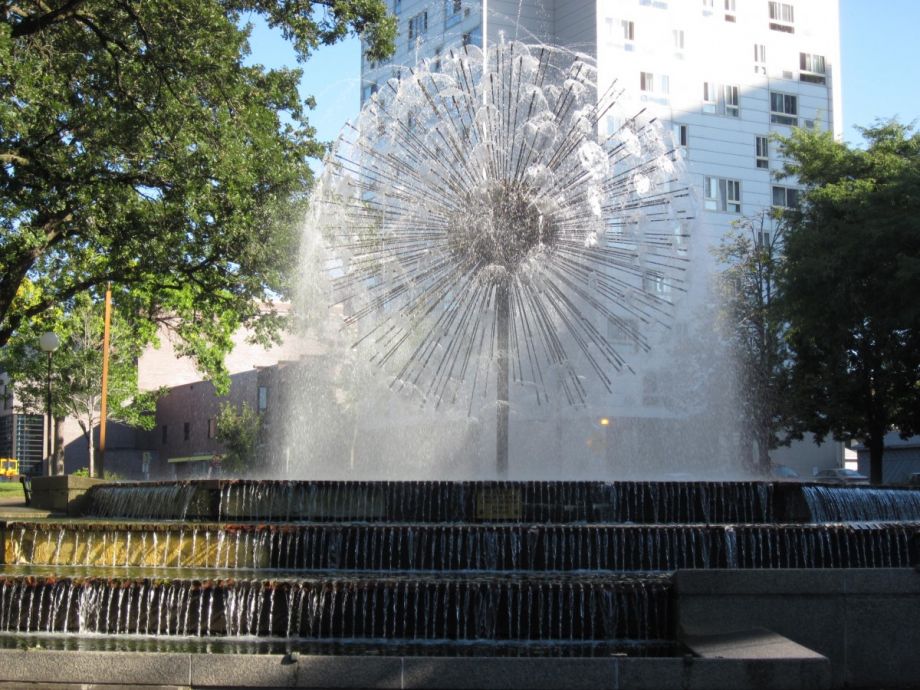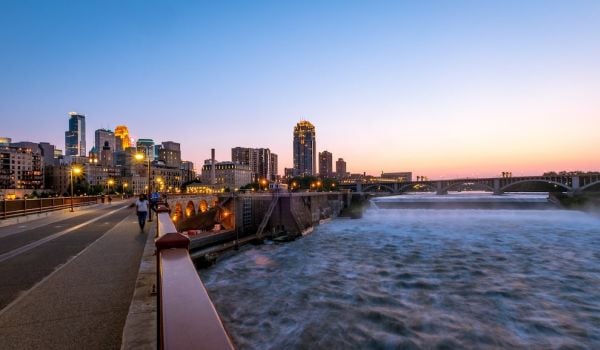Minneapolis, Minnesota, has the best park system in a major city in the U.S. for the third year running, according to the Trust for Public Land’s ParkScore index, released Tuesday.
It outscored rival city St. Paul by just a few points, ranking higher on both park access (the percentage of residents within a 10-minute walk of a park) and park acreage (the percentage of city area dedicated to parks). St. Paul outscored Minneapolis on amenities but it wasn’t enough to push it to first.
Close behind the Twin Cities were Washington, D.C., in third place, and Arlington, Virginia, in fourth.
At the bottom of the list was Charlotte, North Carolina, where despite its boomtown growth only about 30 percent of the population has close access to a park. Fort Wayne and Indianapolis, Indiana, which tied for last place in the ParkScore 2017 rankings, “declined to participate” this year and were not ranked, TPL said.
The Trust for Public Land has been running its annual ParkScore rankings for seven years, ranking cities on park access, amenities, acreage and per-capita spending on parks. This year, the Trust updated its algorithm to include splashpads and restrooms as amenities, and added volunteer hours and charitable contributions to its calculation of parks spending. This provides “a ranking boost to cities whose residents strongly support their park systems,” TPL said.
“I’m thrilled that our park system continues to earn accolades,” Minneapolis Mayor Jacob Frey said in a statement to the Minneapolis Star Tribune. “We have world class parks and the world is taking notice.”
Ninety-seven percent of Minneapolis residents and 96 percent of St. Paul residents live within a 10-minute walk of a park. San Francisco is the only city where all residents live that close to a park, but its relatively small median park sizes pushed it to fifth place.
TPL uses a relatively sophisticated algorithm to measure park access. If a park is physically close to a neighborhood but cut off by a highway or other obstacle, it isn’t counted.
“We want to make sure that people can get to a park on foot, because what we’ve seen in terms of health studies done at both the national as well as local levels is that if people can walk—versus ride a bike or get into a car or take the bus—the usage rate for parks goes up pretty heavily,” Charlie McCabe, director of the Trust for Public Land’s Center for City Park Excellence, told Fast Company. “People stay longer, and people exercise more.”
The ParkScore also ranks cities on their park acreage. But since land is often limited in cities, improving this metric is challenging. Fast Company explains how Chicago, which rose from 11th on the list in 2017 to 8th in 2018—its first time in the top 10—increased its park acreage by working with school districts to redesign school grounds into green areas with gardens and play spaces. The city is planning to build 34 schoolyards by 2019. The revamped spaces capture stormwater to reduce flooding, serve as outdoor classrooms for students and are open to the public outside of school hours.
Other interesting factoids from this year’s rankings: Boise, Idaho, is still the best city for dogs, with 6.7 dog parks per 100,000 residents. Norfolk, VA, has the most basketball hoops, and Cleveland, Ohio, has the most splashpads and water features.
Explore the rankings and data yourself here.

Rachel Kaufman is Next City's senior editor, responsible for our daily journalism. She was a longtime Next City freelance writer and editor before coming on staff full-time. She has covered transportation, sustainability, science and tech. Her writing has appeared in Inc., National Geographic News, Scientific American and other outlets.
Follow Rachel .(JavaScript must be enabled to view this email address)
















